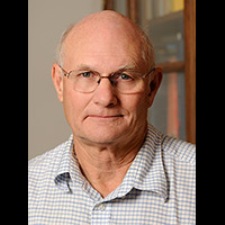Jul 19 2013
Holland Ford, an astronomer at The Johns Hopkins University in Baltimore, Md., has received NASA's Distinguished Public Service Medal for his outstanding contributions to the Hubble Space Telescope.
 Dr. Holland Ford
Dr. Holland Ford
Ford attributes his success to the thousands of people in government, industry, science institutes, and academia who worked together to build and use Hubble to revolutionize our view of the universe. "What a privilege to be part of this great endeavor!" he says.
The Distinguished Public Service Medal is NASA's highest form of recognition, awarded to someone who has made a profound impact on the success of a NASA mission. The medal is one of several Agency Honor Awards given annually in a ceremony at NASA Headquarters in Washington and at each NASA center. Each nominee undergoes a careful selection process before the NASA administrator approves the final recipients.
Ford began his involvement in the Hubble mission years before the telescope launched in 1990. He was a co-investigator on the Faint Object Spectrograph (FOS), one of Hubble's first-generation instruments. When scientists discovered the telescope's flawed primary mirror shortly after its deployment in 1990 in Earth orbit, Ford assumed a lead role in organizing the Hubble panel that developed a solution for improving Hubble's performance. The panel recommended the development of the Corrective Optics Space Telescope Axial Replacement (COSTAR) to sharpen Hubble's blurred vision. Installed during the first servicing mission to Hubble in 1993, COSTAR returned Hubble's vision to its pre-launch expectations, ensuring that the telescope would meet its primary science goals.
The Hopkins astronomer also developed the Advanced Camera for Surveys (ACS), which significantly increased Hubble's survey capability. The ACS made one of the longest and deepest visible-light images of the universe, called the Hubble Ultra Deep Field. The camera also played an important role in understanding dark energy, which is causing the universe's expansion to accelerate. In addition, the first visible-light view of an extrasolar planet was captured by the ACS.
The ACS science team published more than 100 papers with more than 7,000 citations on topics ranging from planet-forming debris disks around nearby stars to galaxies forming during the first billion years of the universe. ACS postdoctoral fellows now have positions in universities and institutes around the world.
Besides developing Hubble instruments, Ford and his FOS colleagues also made important discoveries with the space telescope. His Hubble observations helped provide the first evidence for the existence of supermassive black holes in the cores of most galaxies. Using the FOS, Ford identified the presence of a 6-billion-solar-mass black hole in the active galaxy M87.